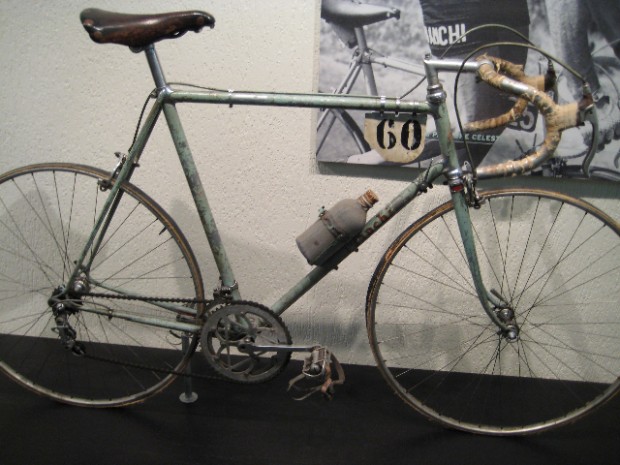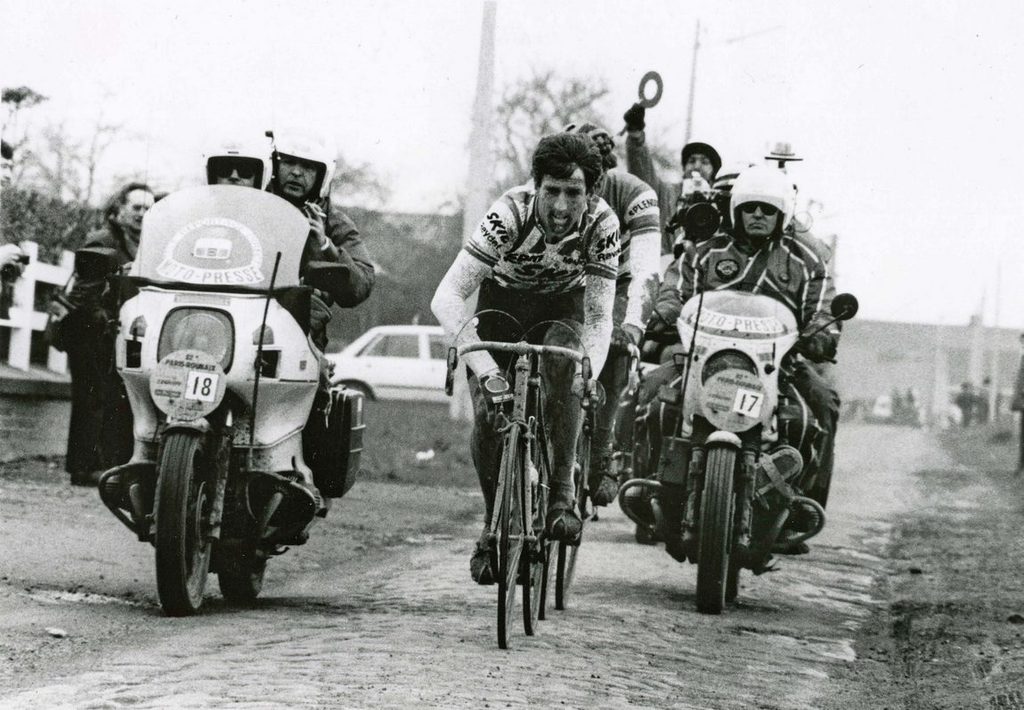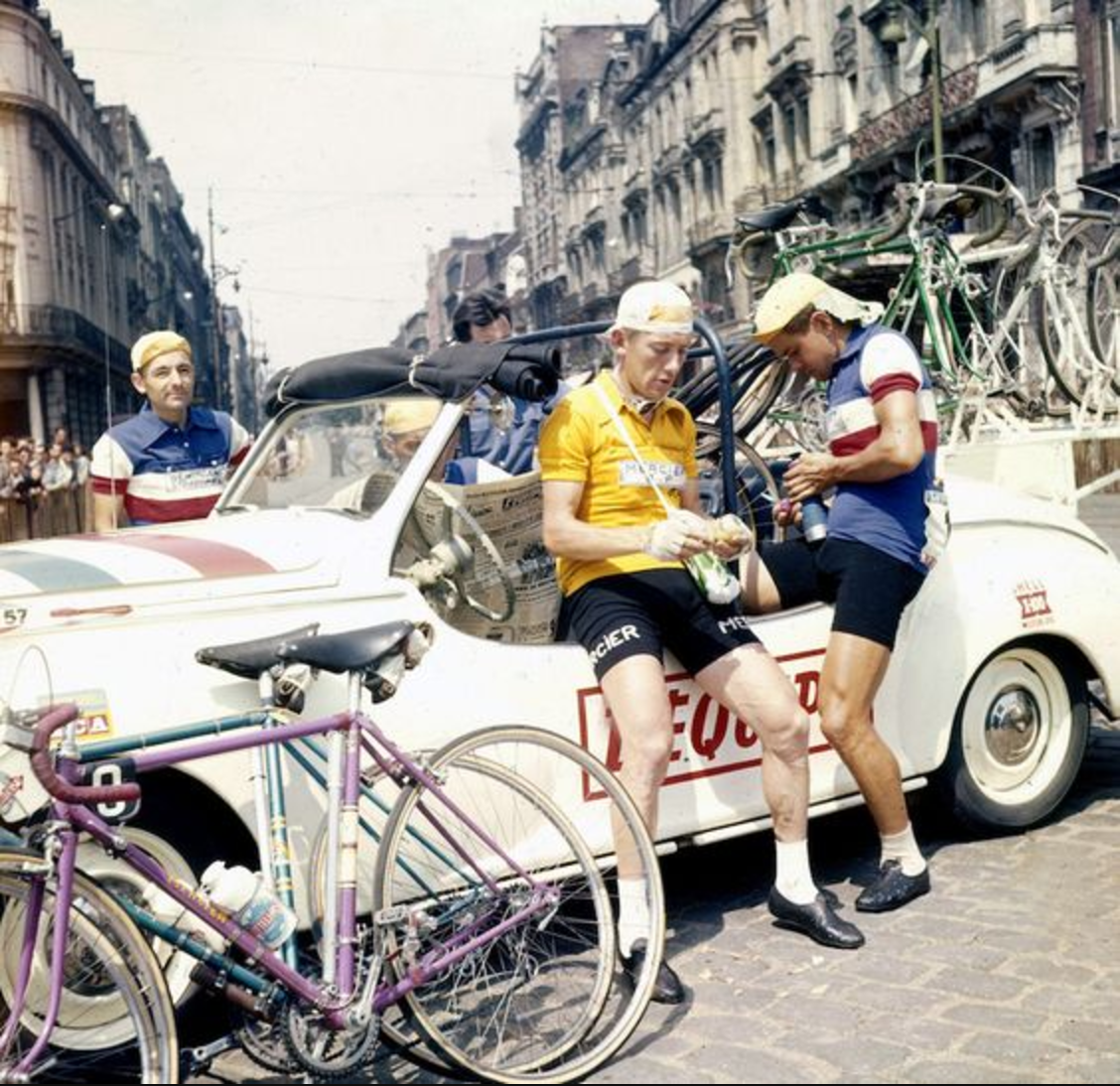La Bicyclette, Part II: Scars

We meticulously care for our bicycle, stopping only just short of pampering it. Through ages spend coveting, building, and riding it, we become attached to it and its beautiful finishing details – the luster of the frame’s finish, the angle and sweep of the bars, the gleaming white tape, the tires, the wheels – all perfectly curated and cared for. Though we anthropomorphize it; the bicycle is, at its core, a tool. It is meant to be ridden. It is built to carry us to the heavenly heights of our sport’s legendary Cols and into the jarring hell of the Pavé du Nord; our machines will be subjected to vehicular transport, to ruthless baggage handlers, to rain, mud, snow, to crashes, and to careless accidents that come to it by way of its daily use. As the bike’s cosmetic perfection fades, it gives way to a beauty told through its scars: derailleurs and ergo shifters ground down in a crash, crank arms rubbed by countless revolutions of the pedals, chips in the frame’s finish from road rocks or gouges in the paint from a stubborn signpost used to improperly lean our machine against.
Through our journey, we have lost hold of the boundary between rider and machine; each wound inflicted upon la bicyclette is a wound inflicted upon our very flesh. It is the Way of Things. The ride is the cathedral where we worship, and the bike is the mechanism that carries us through this journey of discovery, beauty, pleasure, pain, triumph, and tragedy. I would much rather see my cherished #1 cleft in two upon the cobbles of Northern Europe than have her waiting at home, immaculate and flawless.
This damage is nevertheless categorized into good scars and bad scars. Good scars enliven the narrative we weave upon our machines and includes benign crash damage, rub marks on the cranks, besmirched bar tape, rubbed-off logos on the nose of the saddle, or that spot along the top tube where your knees have dulled the paint through total commitment to finding the V Locus. My Bianchi EV2, on its maiden voyage after replacing the original frame destroyed in a crash, was to be subjected to a catastrophic failure of my Mektronic drivetrain in a town-line sprint. The derailleur autonomously shifted, the chain snapped, several spokes broke free from the rear wheel and then rapped upon the rear triangle, tearing giant chunks of paint from the seat and chain stays. I nearly crashed and my new frame had already lost its cosmetic perfection, but these marks help tell a story which would be the poorer for their absence.
Bad scars, on the other hand, include the several dozen ding marks scattered about your frame and wheels from the time you carefully packed your bike into a travel case but neglected to remove a loose allen key which then spent the duration of the 12-hour flight to Europe bouncing around inside the case. Or perhaps that time someone helpfully leaned your bike against a car and someone drove off in that same car before you had a chance to move it, like I did to my dad’s new Merckx the first weekend he had it, as he was preparing for his first ride on it. And, of course, the time-tested rite of passage: replacing your forks after driving into the garage with the bike still on the roof.
Through use, our beloved machines will lose their cosmetic perfection. We do our best to avoid them, but once the pain has faded, the narrative of our time together speaks through the scars left on La Bicyclette.
Vive la Vie Velominatus.

